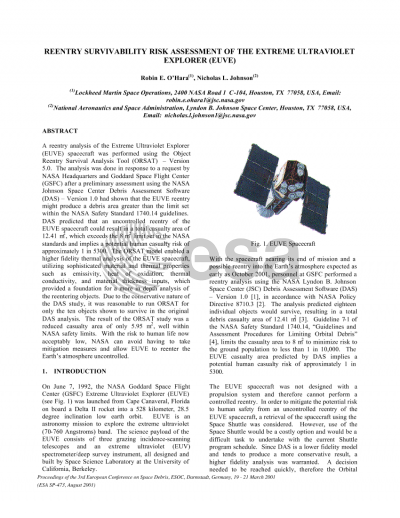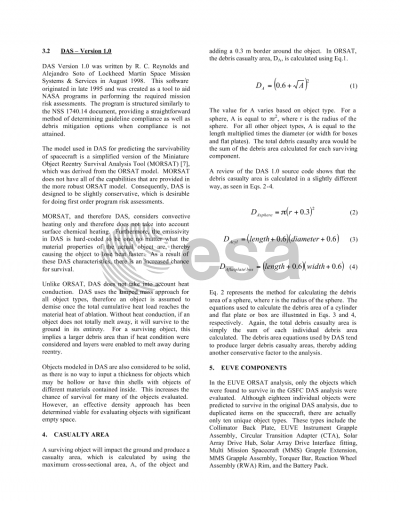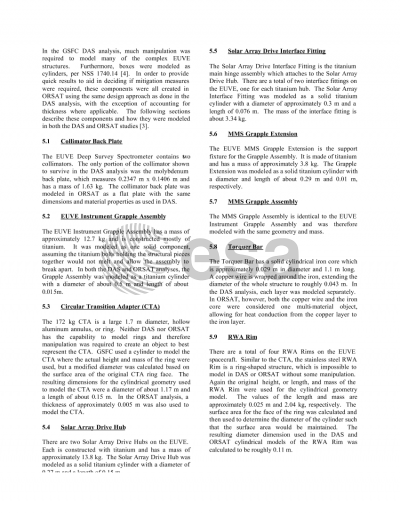Document details

Abstract
A reentry analysis of the Extreme Ultraviolet Explorer (EUVE) spacecraft was performed using the Object Reentry Survival Analysis Tool (ORSAT) - Version 5.0. The analysis was done in response to a request by NASA Headquarters and Goddard Space Flight Center (GSFC) after a preliminary assessment using the NASA Johnson Space Center Debris Assessment Software (DAS) - Version 1.0 had shown that the EUVE reentry might produce a debris area greater than the limit set within the NASA Safety Standard 1740.14 guidelines. DAS predicted that an uncontrolled reentry of the EUVE spacecraft could result in a total casualty area of 12.41 m2, which exceeds the 8 m2 limit set in the NASA standards and implies a potential human casualty risk of approximately 1 in 5300. The ORSAT model enabled a higher fidelity thermal analysis of the EUVE spacecraft, utilizing sophisticated material and thermal properties such as emissivity, heat of oxidation, thermal conductivity, and material thickness inputs, which provided a foundation for a more in depth analysis of the reentering objects. Due to the conservative nature of the DAS study, it was reasonable to run ORSAT for only the ten objects shown to survive in the original DAS analysis. The result of the ORSAT study was a reduced casualty area of only 5.95 m2, well within NASA safety limits. With the risk to human life now acceptably low, NASA can avoid having to take mitigation measures and allow EUVE to reenter the Earth's atmosphere uncontrolled.
Preview







